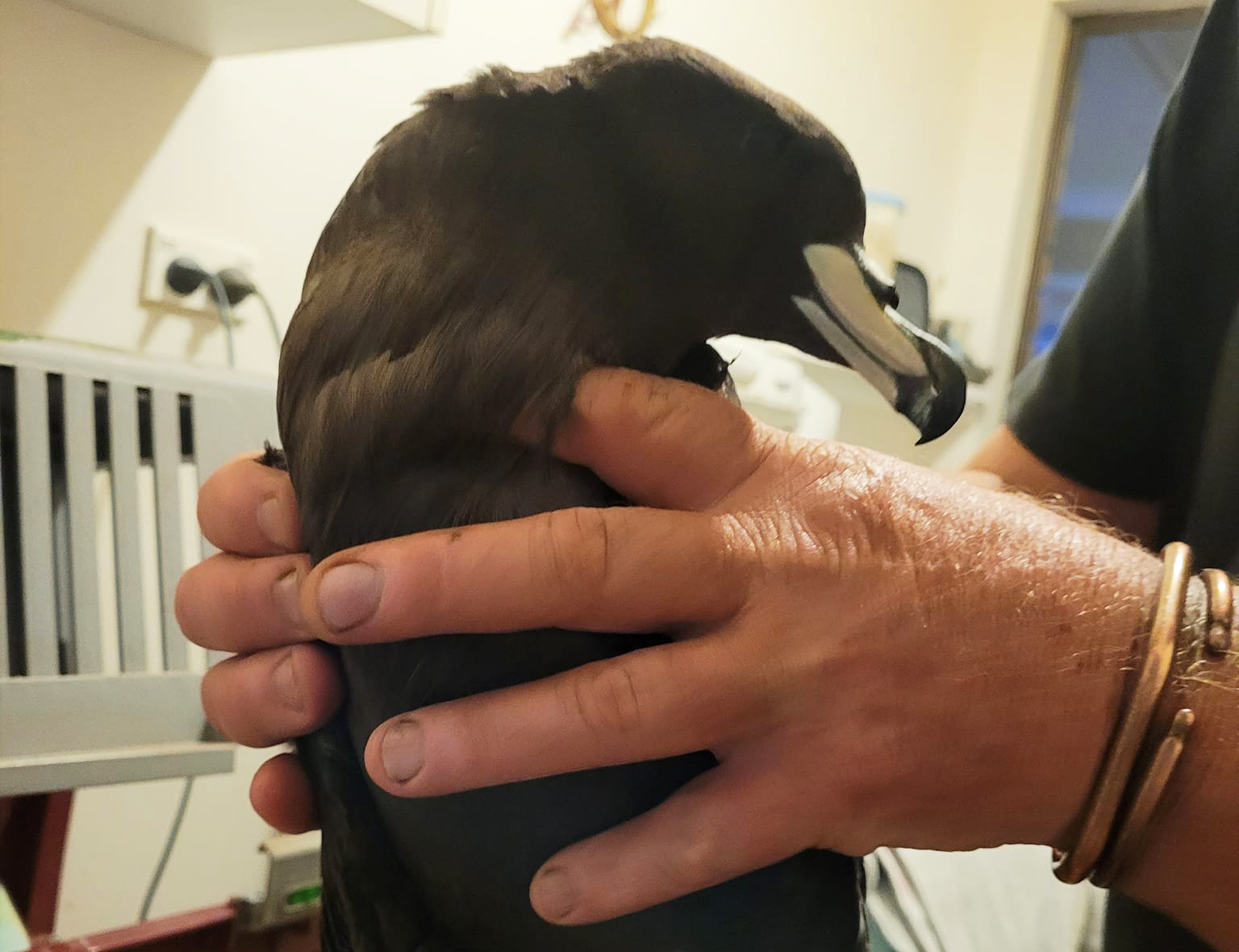 Not from around here: the Westland Petrel found at Wylie Bay in Western Australia; photo courtesy of Lynn Kidd (Esperance Roo Haven and Wildlife Rescue)
Not from around here: the Westland Petrel found at Wylie Bay in Western Australia; photo courtesy of Lynn Kidd (Esperance Roo Haven and Wildlife Rescue)
Westland Petrels are familiar with Australian coastlines, just generally not the 20 788-km stretch that is Western Australia’s.
A member of the public recently found a Westland Petrel at Wylie Bay near Esperance, a town located on the southern coast of Western Australia. The visibly unwell bird was taken to a wildlife carer, who, not recognising the species, contacted a seabird expert who identified it as a Westland Petrel.
Endemic to New Zealand, the globally Endangered Westland Petrel Procellaria westlandica is a colonial, burrow-nesting, annually breeding species. The Westland Petrel's non-breeding range extends east from New Zealand to Chile, though sightings have been known off south-eastern Australia.
When found, the petrel weighed just 580 grams, less than half of what it should be. The wildlife carer was initially able to keep the severely underweight petrel alive, however it was discovered dead on the morning of its fourth day in care.
The bird is now in possession of the Western Australia Museum (WAM), where a taxidermist prepared the specimen for the museum’s collection; the body of the bird was skinned and preserved as a dry specimen, whilst tissue samples from muscle and liver were taken to be kept in frozen storage.
ACAP contacted WAM’s Acting Curator of Ornithology, Dr Kenny Travouillon to ask if any further information on the specimen had come to light since the specimen had been prepared for the collection. He advised the petrel was a subadult male, and the stomach content was full of sardines, its last meal given by the carer (no plastics).
The Museum has a keen interest in documenting and preserving vagrant birds as increases in their sightings may prompt research into factors behind an escalation such as climate change.
Further details on the discovery of the Westland Petrel in Western Australia can be found in coverage given by the ABC (Australia’s national broadcaster), here.
22 February 2023

 English
English  Français
Français  Español
Español